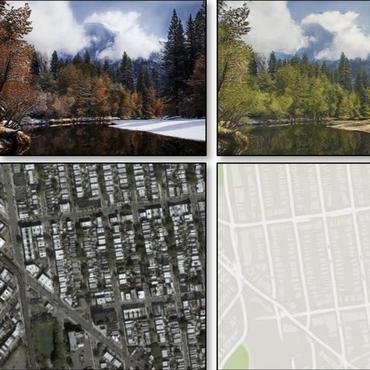Image-to-image Mapping with Many Domains by Sparse Attribute Transfer
Unsupervised image-to-image translation consists of learning a pair of mappings between two domains without known pairwise correspondences between points. The current convention is to approach this task with cycle-consistent GANs: using a discriminator to encourage the generator to change the image to match the target domain, while training the generator to be inverted with another mapping. While ending up with paired inverse functions may be a good end result, enforcing this restriction at all times during training can be a hindrance to effective modeling. We propose an alternate approach that directly restricts the generator to performing a simple sparse transformation in a latent layer, motivated by recent work from cognitive neuroscience suggesting an architectural prior on representations corresponding to consciousness. Our biologically motivated approach leads to representations more amenable to transformation by disentangling high-level abstract concepts in the latent space. We demonstrate that image-to-image domain translation with many different domains can be learned more effectively with our architecturally constrained, simple transformation than with previous unconstrained architectures that rely on a cycle-consistency loss.
PDF Abstract



 CelebA
CelebA